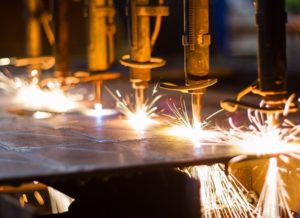With 292,000 jobs created in December, the headlines from Friday’s jobs report were a good sign for the U.S. economy. But tucked inside the Bureau of Labor Statistics release was a more troubling number for the nation’s manufacturers.

A total of 8,000 manufacturing jobs were added in December, bringing the total for the year to a seasonally adjusted 30,000. There were 215,000 manufacturing jobs created in 2014.
National Association of Manufacturers chief economist Chad Moutray wrote in a blog post on the association’s website that 2015 was one of the softest years for manufacturing employment growth since the Great Recession, adding that “headwinds like lower commodity prices, a strong U.S. dollar and economic struggles abroad” would continue to challenge the sector.
Buckley Brinkman, executive director and CEO of the Wisconsin Center for Manufacturing and Productivity said he is “optimistic and bullish” on the manufacturing sector overall, but also acknowledged some portions are struggling.
“There are some areas of it that just dead,” he said, highlighting mining in particular. “It will come back, it’s just going to take time.”
December’s national numbers were driven by a growth of 14,000 jobs in nondurable goods, while the durable goods portion of manufacturing actually lost 6,000 jobs. For the year, 46,000 jobs were added in nondurable goods. There were 16,000 jobs lost in durable goods, including 38,400 lost in machinery.
Wisconsin’s figures have matched the national trend, adding 4,000 manufacturing jobs from November 2014 to November 2015, the most recent state-level data available. That includes an additional 5,200 jobs in nondurable goods and a loss of 1,200 jobs in durable goods.
The year featured both ups and downs for Wisconsin manufacturers. The year started off with the Marquette-ISM report in positive territory, but it has since shown contraction for nine straight months. GE announced it would stop manufacturing engines in Waukesha and Joy Global announced several rounds of layoffs.
But on the positive side, several Sheboygan area manufactures, including Kohler, Bemis and Sargento, last week got behind a new branding effort, saying they had plenty of job openings and they were having a hard time finding workers.
One issue facing all of manufacturing, Brinkman said, is increased volatility.
“It’s more volatile than it’s ever been,” he said, adding that it presents a whole new set of challenges for manufacturers. In addition to the other headwinds, companies have to try to figure out their staffing with wild swings in the volume of production.
“Everybody is trying to shorten their supply chains and make them more responsive to the market and to the end consumer,” Brinkman said.
Brinkman said the state’s manufacturers have increased their productivity by 20 percent since the start of the Great Recession and are doing it with a smaller workforce. Data from the Department of Workforce Development suggest there were about 30,000 fewer people working in manufacturing at the start of 2015 compared to the start of 2008. The figures vary depending on which measurement is used, but there were just over 490,000 people in the industry and around 460,000 now.
Technology is part of the reason the workforce size hasn’t rebounded since the recession ended. Automation is available to more and more companies, Brinkman said, and that has made for a more complex environment.
“It’s no longer good enough to have a strong back and a good alarm clock,” he said. “Now you have one operator running two, three, four, even five CNC machines at one time.”
In addition to finding employees to fill the increasingly complex positions, Brinkman said companies are going to be challenged by an aging workforce.
“Accelerating those productivity gains is going to be incredibly important,” he said, adding that companies will also need to be constantly innovating.
“It’s more than adding three new colors to an old product,” he said, describing a need for solutions to unsolved problems.
In addition, ongoing innovations and the ability for more connected devices means companies have to think about deeply about what they make. For some, it may no longer be enough to make the straightforward product they’ve always made.
“That’s a huge strategic change in how a lot of companies are going to have to think about their business,” he said.

